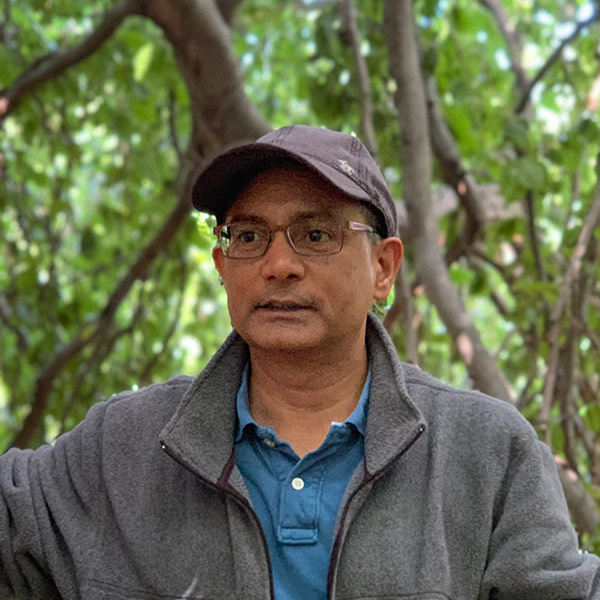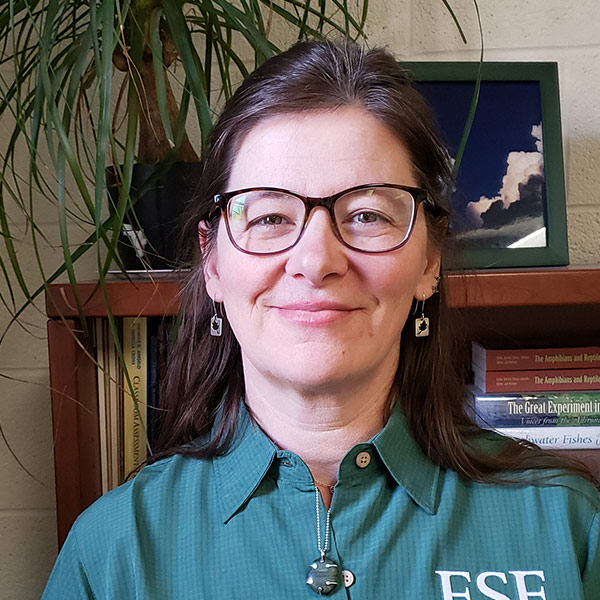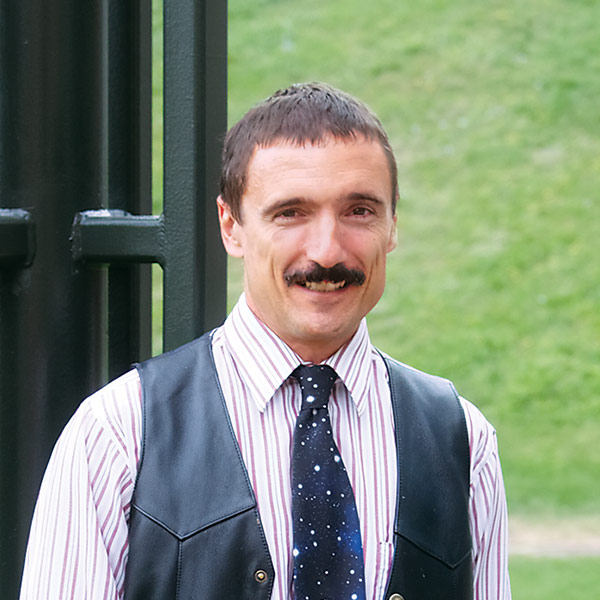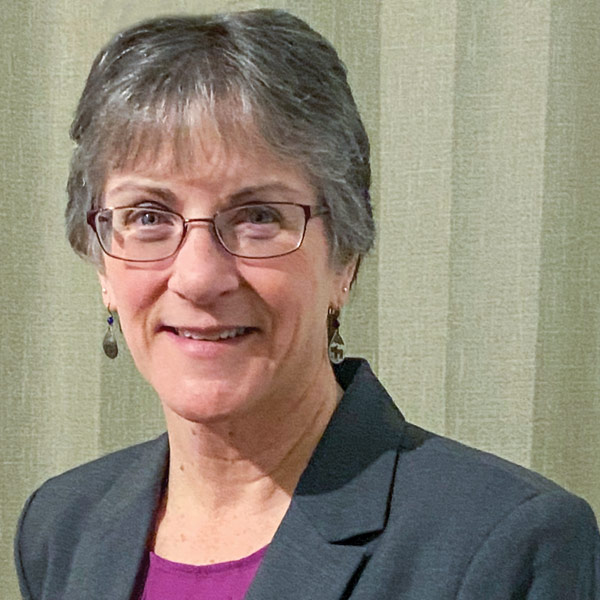Chemistry

Dr. Avik Chatterjee
Chair and Associate Professor
Department of Chemistry
apchatte@esf.edu
315-470-4747
I am pleased to be able to provide an update on the Department of Chemistry.
In March 2019, in recognition of his contributions as a teacher and scholar in the field of chemical oceanography, Dr. David Kieber was elevated to the rank of SUNY Distinguished Professor. This is a distinction that is bestowed upon only a select group of individuals.
In fall 2019, Dr. Erica Majumder joined our faculty as an assistant professor of biochemistry from the Scripps Research Institute. We are pleased to welcome her both to our department and to ESF.
We are excited to share the news that Dr. Ivan Gitsov’s research group was the first in the world to achieve enzymatic synthesis of perfectly alternating copolymers. The unique feature of the copolymerization strategy was that the process was mediated by two enzymes co-compartmentalized within a micelle or a hydrogel.
Moreover, the copolymerization was conducted in aqueous medium and the comonomers were not water-soluble. Of similar significance is their reported controlled synthesis of a new family of linear-dendritic copolymers capable of forming films with a honeycomb morphology upon deposition on solid surfaces. These findings were reported in “Unprecedented Enzymatic Synthesis of Perfectly Structured Alternating Copolymers via ‘Green’ Reaction Cocatalyzed by Laccase and Lipase Compartmentalized Within Supramolecular Complexes, “Biomacromolecules, 20(2), 927-936 (2019); D.M. Scheibel, I. Gitsov, and “Controlled ATRP Synthesis of Novel Linear-Dendritic Block Copolymers and Their Directed Self-Assembly in Breath Figure Arrays,”Polymers, 11(3),539 (2019); X. Liu, I. Gitsov.
Environmental and Forest Biology

Dr. Melissa Fierke
Chair and Associate Professor
Department of Environmental and Forest Biology
mkfierke@esf.edu
315-470-6809
Dr. Don Leopold, our fearless leader of more than 14 years, stepped down as department chair in spring 2019. He is already involved in many projects that include summer travel to Russia and playing an integral role in a funded Discovery Challenge grant regarding restoration science. Our long-time department secretary, Sandra Palomino, also left her position this past spring after more than 49 years at the College; she had been with EFB since 1985. She has graciously remained with us part time to train her replacement, though she is most definitely irreplaceable.
At the May 2019 Academic Governance meeting, several EFB faculty members were recognized: Dr. Jacqueline Frair received the ESF Exemplary Researcher Award and I was honored to receive the Chancellor’s Award for Excellence in Faculty Service. Frair also received the Outstanding Academic Advisor award from ESF’s undergraduate students at the Annual Spring Banquet and Terry Ettinger, our greenhouse manager, received Special Recognition for Staff Excellence for his outstanding efforts, and the time and energy he devotes to his spring plant propagation course.
We welcomed Dr. Jerry Belant to the department in fall 2018 as the Camp Fire Wildlife Conservation Endowed Professor. He is ESF’s first endowed professor. ESF received a financial gift from the Camp Fire Club of America through tireless fundraising efforts led by Frair. Belant’s position is an endowed professorship in wildlife ecology, with a focus on big game management. He has settled in nicely in the department and has an informative website up and running (https://campfirewildlife.com/). We also welcomed two other new faculty members in August. They are Dr. Cynthia Downs, an animal physiologist, and Dr. Josh Drew, a conservation biologist. A more recent hire is Danielle Kavanagh, who will serve as our new department secretary.
Dr. James Gibbs, Frair, Dr. Rebecca Rundell, Ron Giegerich ’78, the Office of Communications and Marketing, the Development Office, Computing and Network Services, Instructional Technology Service and the Physical Plant and Facilities staff are all to thank for the wonderful Roosevelt Wild Life Station Centennial celebration that occurred April 3, 2019. This is in addition to the opening of the new Roosevelt Wild Life Collections and Classroom (RWLCC) in the lower level of the Gateway Center, which became a reality this past spring. Many had a role in this endeavor, but Rundell, RWLS head curator, carried a huge amount of the final burden and sacrificed a lot of time and energy in the effort. Delivery of this world-class facility involved working closely with colleagues outside the department, particularly with the Physical Plant and Facilities staff. Our prospective students, parents and other important visitors have already had the privilege of seeing this modern facility firsthand. Visitor observation is facilitated through the “windows on collections” built into the design. Walls surrounding the RWLCC feature a permanent exhibit with attractive landscapes of the Adirondacks by renowned photographer Carl Heilman, as well as inspirational photographs of vertebrate animals facing conservation threats.
Work began this past fall to transform the Illick Hall sub-basement into a much more user-friendly space and the west end of the third floor into a shared Terrestrial Ecology Research (TER) Lab, a new state-of-the-art seminar room and a dedicated space for our Center for Native Peoples and the Environment. The sub-basement and the TER lab spaces are shared by EFB and faculty from the Department of Sustainable Resources Management, helping to foster continued collaborations between our departments. These renovations are spearheaded and guided by Rex Giardine in Physical Plant and Facilities, and funded through the Marshall Hall rehabilitation project that will officially start during summer 2020. We are also engaged with a design firm as well as SUNY Construction Fund representatives in a program study for Illick. This study will guide renovations over the next five to 10 years.
Congratulations go out to Dr. Karin Limburg for a recently funded National Science Foundation grant to study deoxygenation of the ocean linked to climate change and Dr. Robin Kimmerer ’75 for receiving funding through the Sloan Foundation to support graduate students associated with our Center for Native Peoples and the Environment. Dr. Bill Powell’s chestnut program is going strong, and his lab group recently submitted a proposal to allow for distribution of chestnut seeds and the planting of blight-tolerant chestnut trees
Lastly, Gibbs led an expedition in November to explore the island of Fernandina in the Galapagos, purportedly the largest pristine island on Earth, to determine if there is another mysterious species of giant tortoise.
EFB’s enrollments, external funding and worldwide attention in the media continue to be strong — the department is doing well thanks to our excellent students,
successful alumni, fine faculty and dedicated staff.
Environmental Science

Dr. Russell Briggs
Director and Distinguished Teaching Professor
Division of Environmental Science
rdbriggs@esf.edu
315-470-6989
The Division of Environmental Science oversees the B.S. program in environmental health, the B.S. program in environmental science and the graduate program in environmental science (GPES). These interdepartmental programs continue to attract a wide array of students beyond the traditional departments, laying a strong foundation for the next generation of environmental scientists and managers. Currently, there are 48 undergraduates enrolled in environmental health (EH) and 129 in environmental science. In addition, 40 of the 77 students enrolled in GPES are pursuing their Ph.D.
We continue to refine our undergraduate environmental science program to meet the needs and expectations of our graduates. We are excited to add a new required course, ENS232, Professional Development in Environmental Science. ENS232 builds on our initial course for first-year and transfer students. This new course provides a formal means to engage students in initiation of either internship or research credits in their second year at ESF, effectively preparing them for their senior synthesis projects. The senior synthesis experience focuses on training students to work in teams to apply learning and problem solving. Continued development of our program is due in large part to the efforts of Monica Blaisdell ’18, undergraduate advisor and curriculum coordinator for the B.S. in environmental science. She has been working closely with Ann Moore ’96, director of Outreach and Experiential Learning, to provide applied learning opportunities as the basis for many senior synthesis projects.
One of the highlights of this past year was associated with our ongoing efforts to increase opportunities for active learning. Blaisdell worked with Dr. Tim Volk ’02, leading students on a field trip to several dairy farms across Onondaga County with the American Dairy Association North East. Agriculture and sustainable food production is becoming a popular topic among our students. This field tour provided students with an opportunity to learn more about conservation practices used on farms of varying size.
The first stop, Barbland Dairy, is a large 4,500-acre operation comprising 1,900 cows and 45 employees. One of the partners described their state-of-the-art food waste management system, manure management and milking parlor operations. That led to a presentation of the farm’s obligations under the Chesapeake Bay TMDL (Total Maximum Daily Load) as a stakeholder in the Upper Tioughnioga Watershed, which ultimately drains to the Chesapeake Bay.
After lunch at Barbland Dairy, students travelled to Dennis Family Farm (2018 Conservation Farm of the Year) to observe several conservation practices on a smaller farm system. Students had the opportunity to observe a milkhouse wastewater treatment system, stormwater dripline system, rotational grazing system and a buffer system designed to exclude cows from the tributary leading to Limestone Creek. This experience allowed students to connect concepts learned in their coursework to real-world situations in the local community. Future field tours will likely focus on soil health and stakeholder collaboration. This field experience ultimately engages students in the initiation of their senior synthesis projects.
This year, our environmental health program received full accreditation; it is now one of only 28 nationally accredited programs. As part of that accreditation process, Dr. Lee Newman attended the annual National Environmental Health Association conference in Nashville, Tennessee.
Additionally, each year Newman attends the East Coast Association for Environmental Health Sciences meeting. As a member of the Scientific Advisory Board for the Conference, she takes students from the environmental health major to the conference to present posters about their professional internships. This year, three students presented their undergraduate synthesis projects at that meeting.
This provided students an opportunity to present at a national conference and helped them to begin establishing a professional network.
To assist students in finding internships and establishing their professional networks, the Environmental Health Orientation course continues to bring in professionals to discuss their personal career path, as well as internship and job opportunities in the EH field. As a result, we had a student obtain a prestigious National Environmental Health Association fellowship, and another obtained a U.S. Public Health Service Internship last summer. These opportunities set students up for their professional careers post-graduation.
The division continues to evolve to meet current and emerging education and training needs for the fields of environmental science and environmental health. The field tours and opportunities for students to present at national meetings showcase our efforts to engage students in active learning. We continue to seek input from any alumni who have an interest in helping mentor our students as they make their way toward professional careers. If you have the opportunity to visit the campus, please stop by the division office in 202 Baker Laboratory. If you have any questions or comments, please feel free to share them with me (email rdbriggs@esf.edu).
Communications and Marketing

Specchio to Lead Office of Communications and Marketing
Stephanie Specchio joined the ESF leadership team as associate vice president for communications and marketing Feb. 1. Specchio comes to ESF from Corning Community College where she served as the director of marketing and communications for the past five years. Prior to this, she held the position of director of communications at Cornell University School of Veterinary Medicine. She holds a Master of Science in integrated marketing communication from West Virginia University.
Specchio brings a breadth and depth of relevant experience to ESF’s unique marketing and communications needs. “I look forward to working with Stephanie and leveraging her talents as we position the College for increased national and international visibility of our research, academic programs, faculty, staff and students,” said Interim President David C. Amberg.


